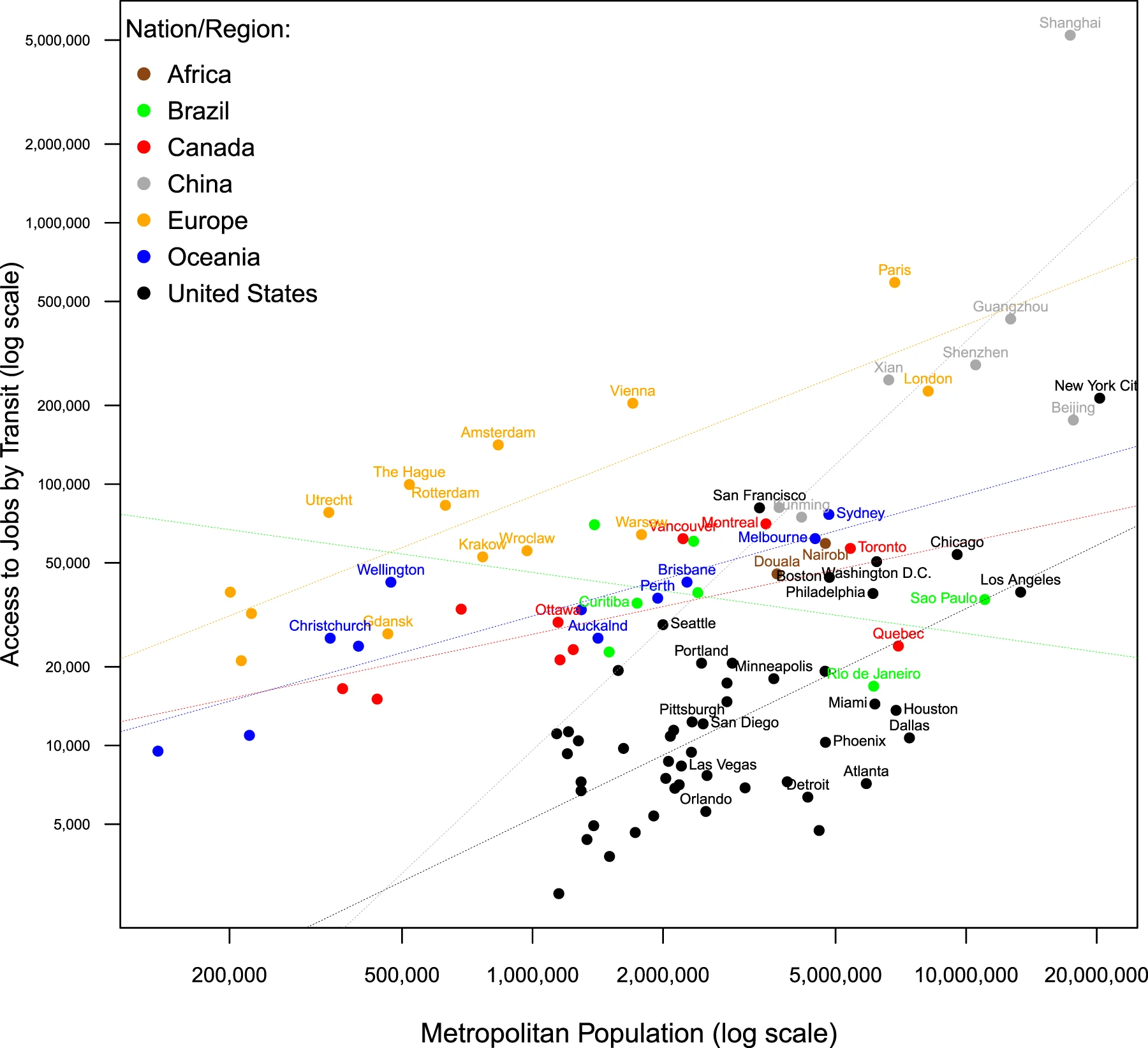Global comparative study of transport accessibility

Glad to share our new paper comparing accessibility to jobs by transport mode across 117 cities from 16 countries and 6 continents. This is the largest global comparative study of transport accessibility conditions conducted so far. The study was led by Hao Wu in collaboration with David Levinson and many others. It is the combined result of huge efforts from different groups, including the Access to Opportunities Project in Brazil. The paper is open access, and you can download it in the link below:
- Wu, H. et al. Urban access across the globe: an international comparison of different transport modes. npj Urban Sustainability 1, 16 (2021). https://doi.org/10.1038/s42949-021-00020-2
Abstract:
Access (the ease of reaching valued destinations) is underpinned by land use and transport infrastructure. The importance of access in transport, sustainability, and urban economics is increasingly recognized. In particular, access provides a universal unit of measurement to examine cities for the efficiency of transport and land-use systems. This paper examines the relationship between population-weighted access and metropolitan population in global metropolitan areas (cities) using 30-min cumulative access to jobs for 4 different modes of transport; 117 cities from 16 countries and 6 continents are included. Sprawling development with the intensive road network in American cities produces modest automobile access relative to their sizes, but American cities lag behind globally in transit and walking access; Australian and Canadian cities have lower automobile access, but better transit access than American cities; combining compact development with an intensive network produces the highest access in Chinese and European cities for their sizes. Hence density and mobility co-produce better access. This paper finds access to jobs increases with populations sublinearly, so doubling the metropolitan population results in less than double access to jobs. The relationship between population and access characterizes regions, countries, and cities, and significant similarities exist between cities from the same country.
Figure: Number of jobs accessible by public transport within 30 min. and population size Transit access to jobs and metropolitan population
